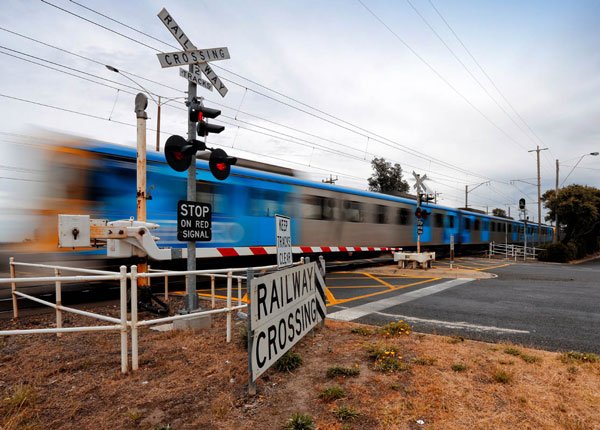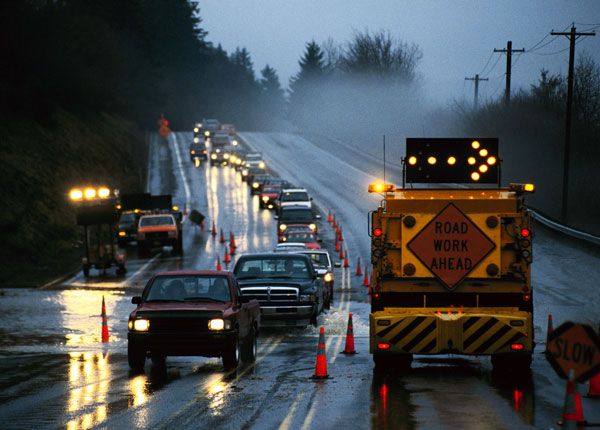
Sharing the Road with Trains: Collision Avoidance and Railroad Crossing Safety Rules
Updated Dec. 11, 2020Did you know that according to the National Highway Traffic Safety Administration (NHTSA), a motorist is almost 20 times more likely to die in a crash involving a train than in a collision with any other motor vehicle? You may think that staying safe at a railroad crossing is a matter of common sense and that vehicle-train collisions are a rare occurrence, but sadly, Federal Railroad Administration (FRA) statistics have another story to tell.
Preliminary results show that there were at least 2,105 vehicle-train collisions around the United States in 2017, resulting in 274 fatalities and 807 injuries. These figures have remained largely unchanged since 2009.
Vehicle-train collisions are often catastrophic. Drivers must know the tremendous risk they subject themselves to when trying to beat a train to a crossing or drive around protective gates. Understand the risks and avoid injury at railway crossings.
Collisions with trains
Most motorists who take risks at railway crossings do not realize how long it takes a train to stop, even when the driver engages the emergency brake. An average-sized locomotive weighs around 200 tons. With 100 railcars added to that locomotive, the train can weigh approximately 6,000 tons. The weight ratio of an automobile to a train is proportional to a soda can and an automobile.
Trains cannot stop quickly due to their enormous size and weight. If you were to pull out in front of an approaching 100-car freight train that is traveling at 55mph, that train would continue along its path for another mile from the point at which the emergency brake is activated. One mile equates to roughly 18 football fields. If your vehicle is stuck on railroad tracks and an oncoming train is in sight, a collision is unavoidable.
Warning lights and gates do improve grade crossing safety, but they do not prevent vehicle-train collisions altogether. An alarming 94 percent of railroad crossing collisions and 87 percent of resulting fatalities are known to be caused by motorists taking unnecessary risks, not by lack of warning lights or malfunctioning gates. Short of eliminating railway-highway crossings, the only way to reduce railway collisions is for motorists to take responsibility for their own safety and educate themselves on the dangers of risky behavior around crossings.
Railroad controls
To cross railways safely, drivers must first understand how to identify crossings and react appropriately when a train is approaching. Passive signs which are installed along the road near railways will warn you of the crossing ahead, while active traffic control devices at the crossing – such as lights and motorized gates – will help you to determine when it is safe to cross.
These signs and devices do not just provide an essential safety message; they also serve to remind drivers of the laws governing railway crossings. The next section will talk you through some of the most commonly encountered signs and active devices around highway-rail grade crossings.
Advance warning sign
This yellow, circular advanced warning sign will usually be the first warning you encounter that a railroad crossing is up ahead. There may also be pavement markings on the road near the yellow advanced warning sign. Both passive signs are intended to prompt drivers to slow down, look and listen for a train.
Railroad crossing sign
The white crossbuck sign is the most common sign at public railway intersections. It consists of two, crossed boards, printed with the words “RAILWAY CROSSING”. Crossbuck signs are found beside or immediately before a railway crossing and should be thought of as yield signs, indicating that an approaching train has the right-of-way. A number below the crossbuck sign indicates how many train tracks are present if there are more than one.
Look out for a limit-line painted on the ground ahead of the crossing, as this indicates where you should stop to wait for passing trains.
Flashing red lights
The meaning of this active sign is quite clear – stop your vehicle immediately, as a train is approaching. Flashing red lights are accompanied by bells and gates, which will sound and close before a train passes through. Not all railway crossings are equipped with these active warning devices.
Railroad crossing safety rules
Always keep the railroad crossing rules in mind when crossing a railway-highway intersection.
- 1

Look left, right and left again as you approach a railroad crossing.
Do this even if the crossing has active warning lights that are not flashing – they could be malfunctioning. - 2

Never try to pass another vehicle as you approach or enter a railway crossing.
- 3

Do not start across the track as soon as a train has passed.
Wait to see if another train is approaching. - 4

At crossings with more than one track, wait until you can clearly see down both sets of tracks in both directions, before attempting to cross.
- 5

Certain vehicles such as buses and trucks are legally required to stop at every railroad crossing, even when active warning lights are not flashing.
Be prepared to stop behind such vehicles. - 6

Trains often appear to be traveling slower than they are.
NEVER try to beat a train over a crossing – you will not win. - 7

In traffic, make sure there is room for your vehicle on the other side of the track before attempting to cross.
Otherwise, the vehicles behind you may move up and leave you stranded on the tracks. - 8

You must always stop at least 15ft away from a railway crossing.
Walking on railroad tracks
Do not walk on railroad tracks under any circumstances. This is both illegal and incredibly dangerous. Train drivers will not be able to see you until they are too close to do anything about it. You may not hear or see an approaching train soon enough to get out of the way yourself.
Light rail vehicles (LRV)
Light rail vehicles include trams, trolleys, streetcars, cable cars and other vehicles which use a public roadway but run on tracks. Drivers of these vehicles have the same rights and responsibilities as regular motorists, motorcyclists, bicyclists and drivers of other motorized vehicles. However, sharing the road with light rail vehicles does require special consideration.
As with vehicle-train collisions, accidents involving light rail vehicles usually occur because a motorist has behaved irresponsibly. Keep these rules in mind and you should not have a problem sharing the road with light rail vehicles.
- Always be aware of light rail vehicle routes. Keep a safe distance from light rail vehicles when they share the road with other traffic.
- Do not attempt to beat a light rail vehicle crossing an intersection.
- Keep in mind that LRV drivers may have blind spots caused by buildings, trees and other vehicles.
- Always look both ways for approaching light rail vehicles before crossing their tracks.
- Do not turn in front of an approaching LRV.
- When signals are present at light rail vehicle tracks, cross the tracks only when the signal indicates that it is safe to do so.
- Never drive directly along LRV tracks. They can be extremely slippery, especially when wet.
- Always aim to cross light rail vehicle tracks at a 90-degree angle. Approaching at a shallower angle could cause your vehicle to lose traction and become stuck.
 Maintain a safe distance from the light-rail vehicle if it shares a street with regular traffic.
Maintain a safe distance from the light-rail vehicle if it shares a street with regular traffic.



